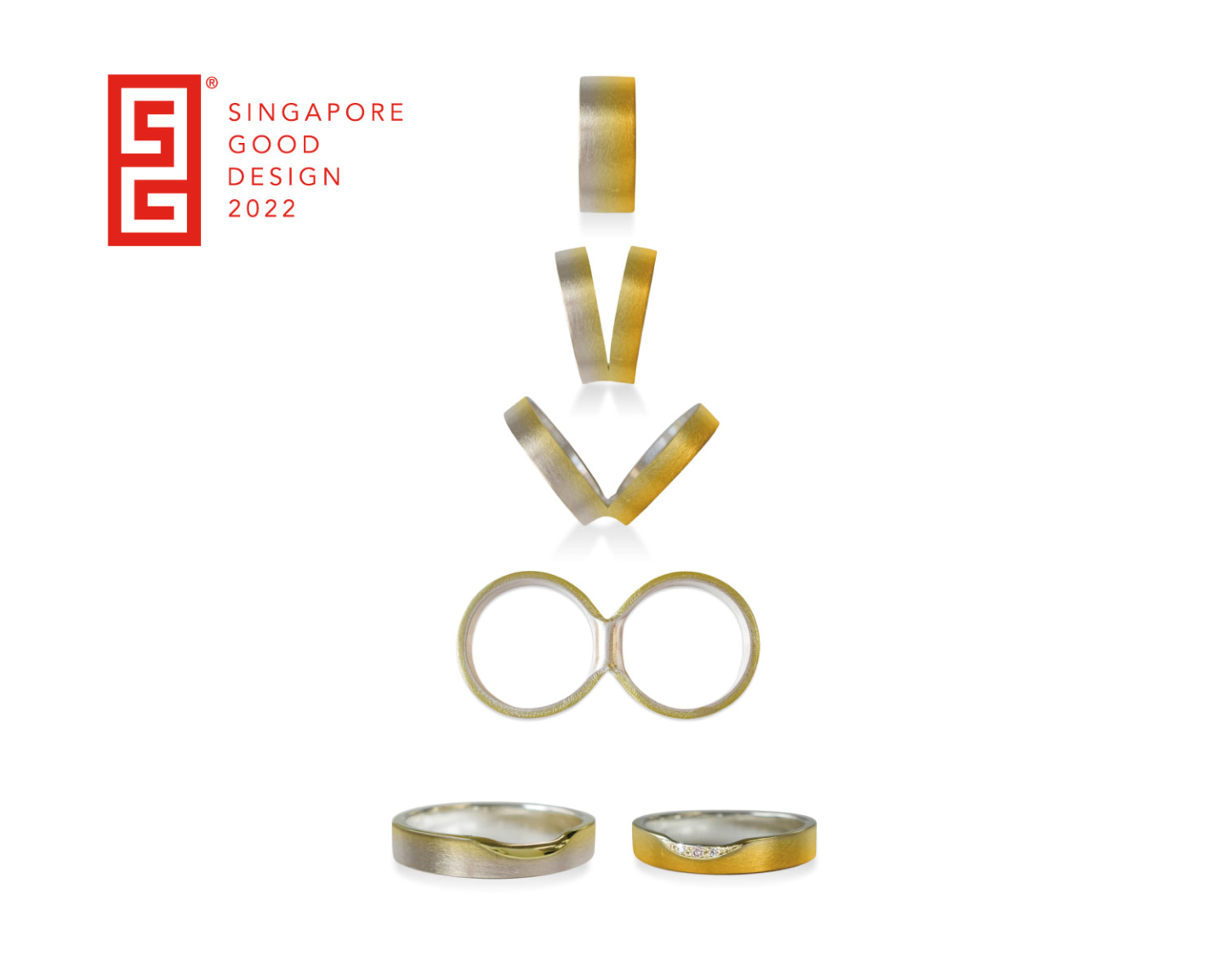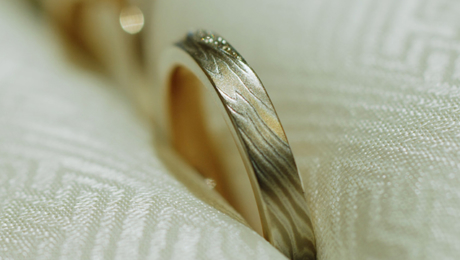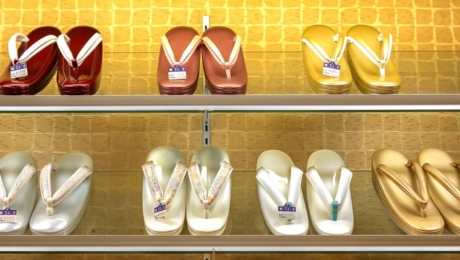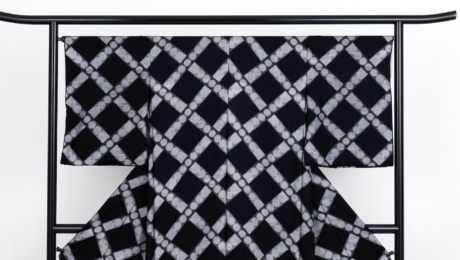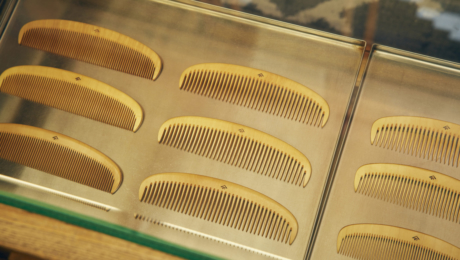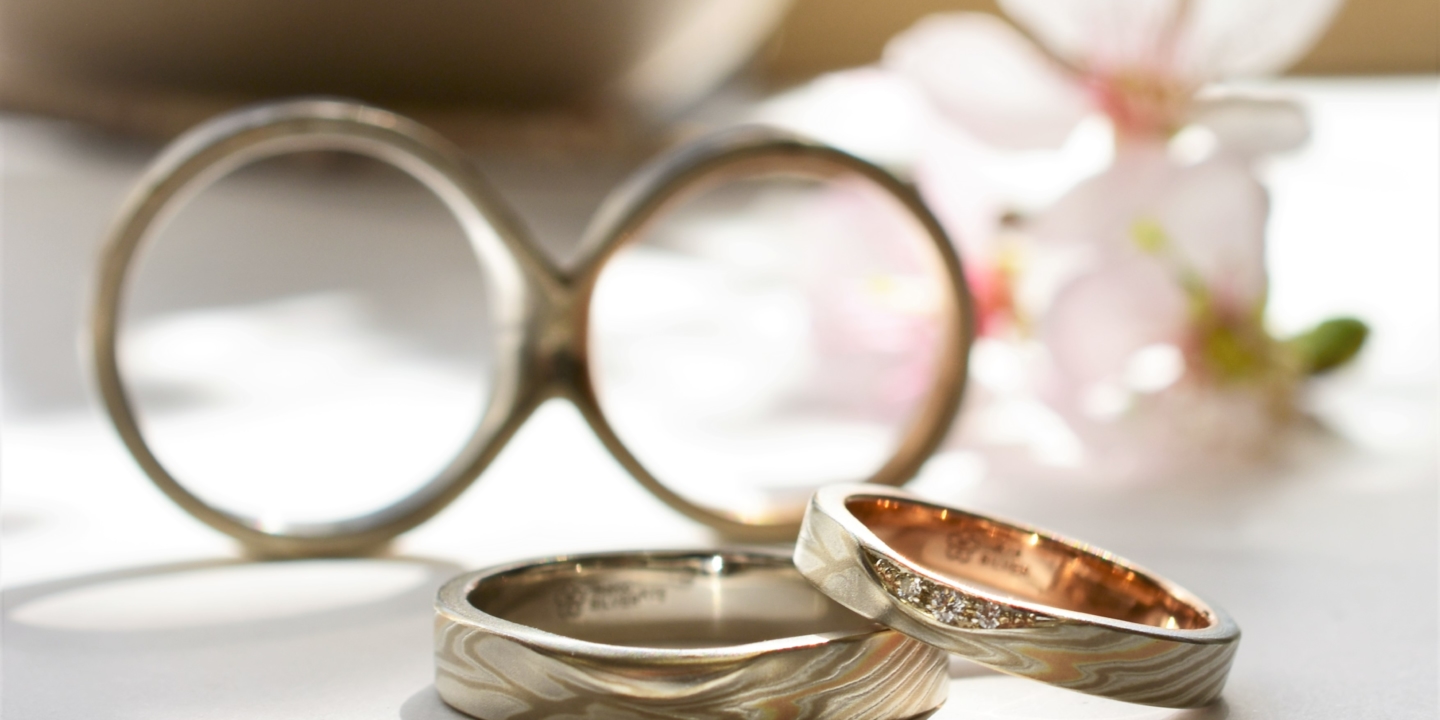

The skill and innovation presented inherent in the Mokume Gane metalworking technique has won it numerous design awards
2022.08.24
FASHIONThe jewelry brand Mokumeganeya has won various design awards throughout the world. Many of these are awards of great renown, such as the Red Dot Design Award and iF Design Award – two of the world’s three major design awards – and the German Design Award, which companies can only apply for after receiving a recommendation from the German Design Council. CEO Masaki Takahashi said, about why the company had applied for the awards,
“We believe that our winning the world’s top design awards will heighten the value of traditional Japanese craftsmanship, and thereby heighten the value of the product the customers are buying.”

Mokume Gane is a Japanese metalworking technique that emerged in the Edo Period (17th to 19th century) . The brand was created out of the desire to pass down this traditional technique – which involves layering metals of different colors on top of each other to create a beautiful, wood grain-like pattern – as a living, “breathing” technique into the modern age, by utilizing it in the creation of wedding rings. The most popular of the brand’s products is the “Tsunagaru-Katachi, ” which was developed as a hands-on, experiential product. In the process of making the two rings, with their wood-grain patterns, a portion of the rings are left connected. The couple then separates the rings using their own hands to complete the process. This specific product has been the recipient of many design awards, such as the Good Design Award in Japan in 2015 – the first time a wedding ring received the honor. Mokumeganeya was praised for exactly what they had set out to achieve, with the jury saying the ring “conveyed the potential of traditional craftsmanship very well, while also incorporating modern elements.”
In addition to the numerous Western awards it has received, the ring also won the Golden Pin Design Award, the highest-level design award of Greater China in Taiwan, in 2021. The company applied for the award out of a desire to cultivate trust amongst local consumers, amidst their move towards a full promotional roll-out in Taiwan. In the same year, the “Tsunagaru-Katachi Gradation,” a new iteration of the “Tsunagaru-Katachi” ring, received the German Design Award. The same product also won the Singapore Good Design Award in June of this year. This ring, which is designed to be in a gradation from silver to gold, is also separated by the couple themselves, thus allowing each half of the couple to wear a ring in the shade they prefer, while feeling the bond that comes from the two rings having been one. The product is an embodiment of Mokumeganeya’s spirit of challenge, which has resulted in the creation of so many innovative designs.
“Of course we’re happy to have received the award, but our real treasure is the process of creating these designs, which utilize traditional techniques while also conveying value for the modern age. We hope to further promote this Japanese metalworking technique – which has been presented in art museums abroad as Mokume Gane – in the form of jewelry throughout the world.”
